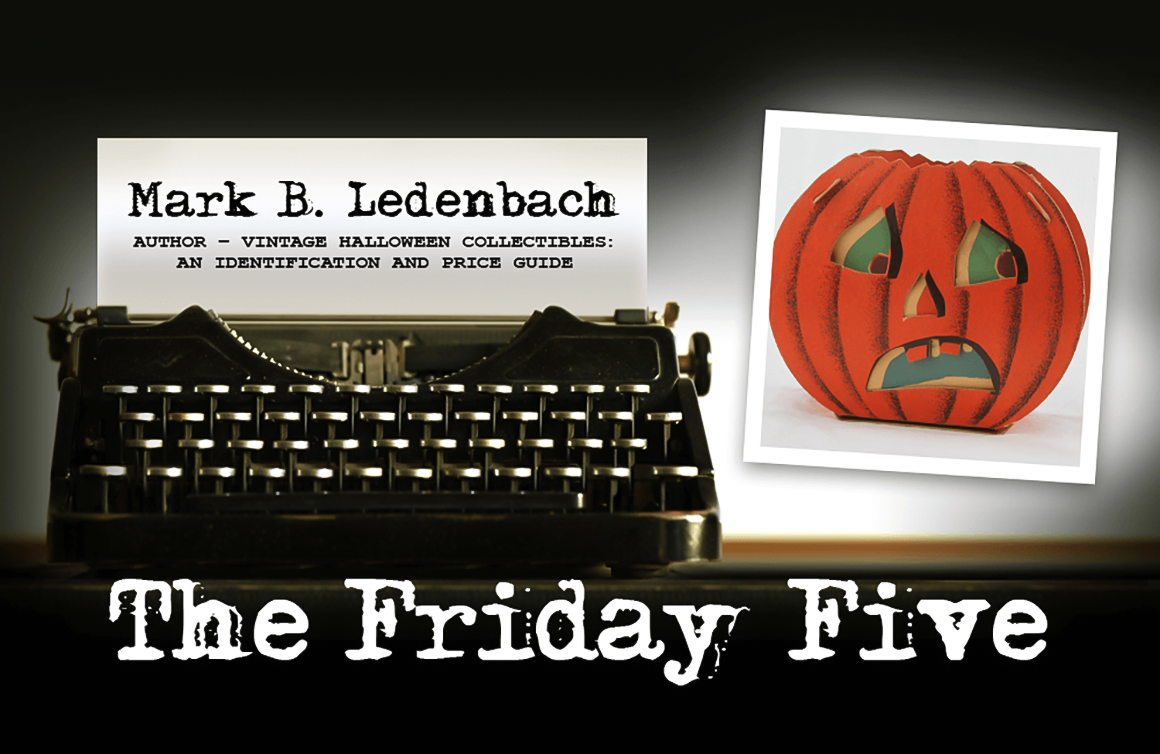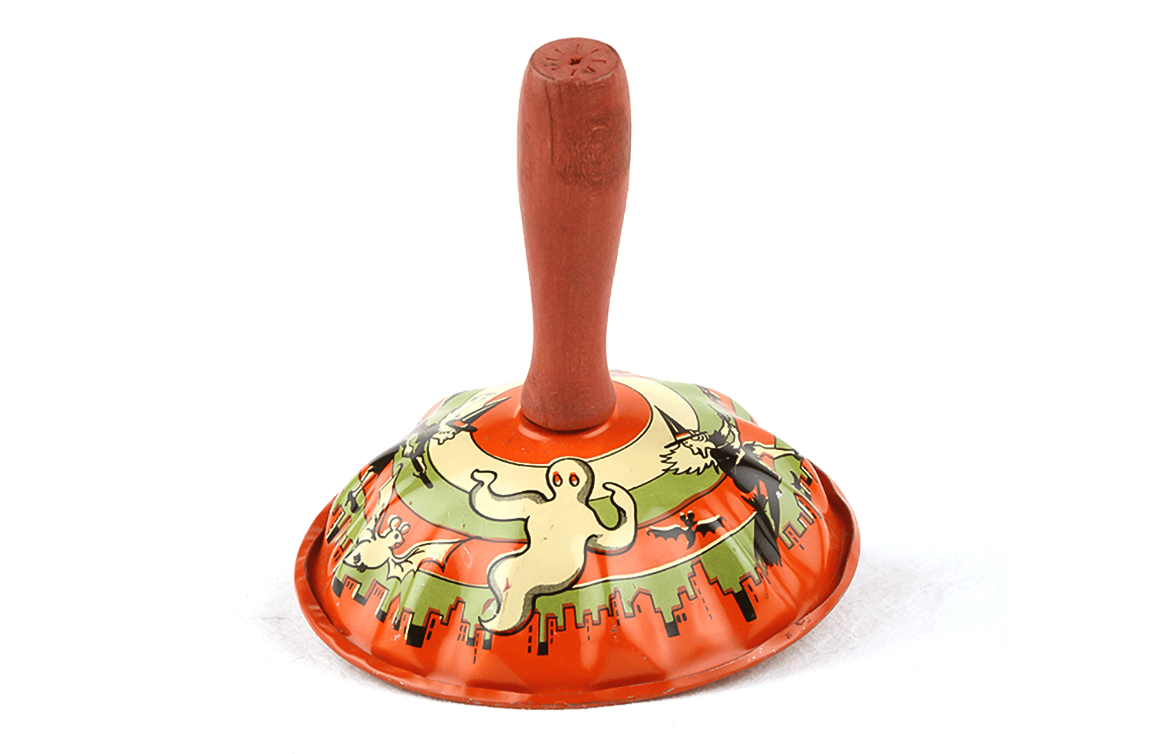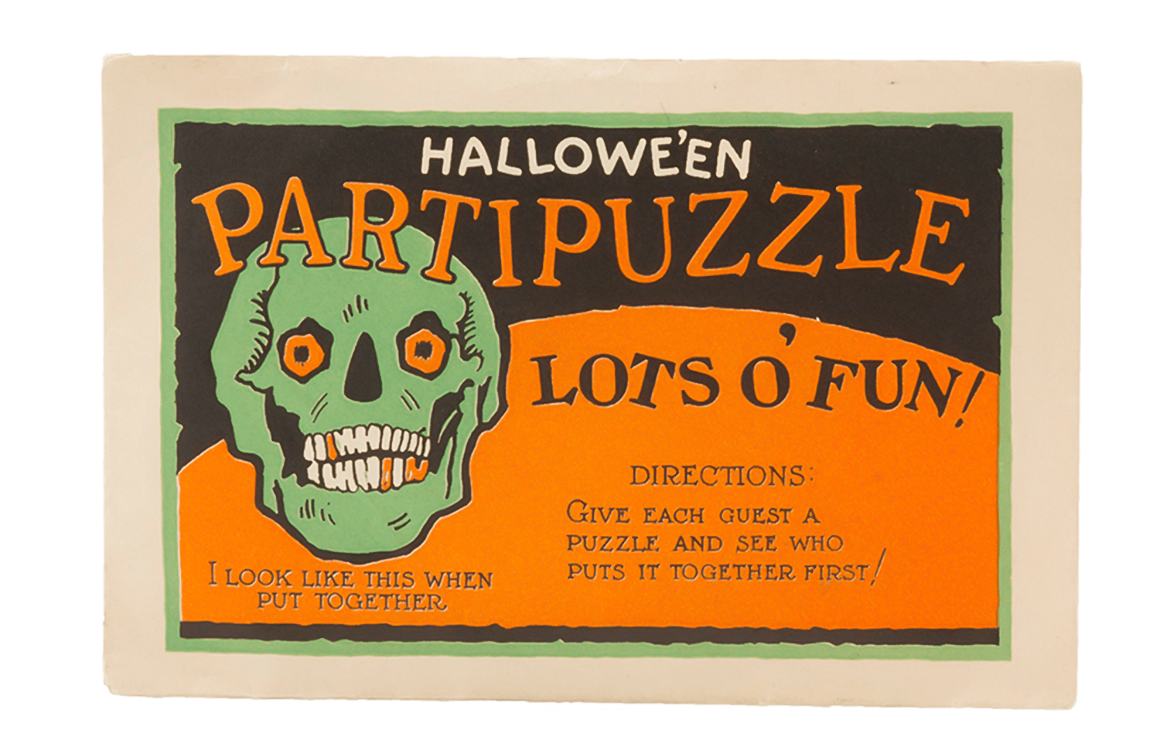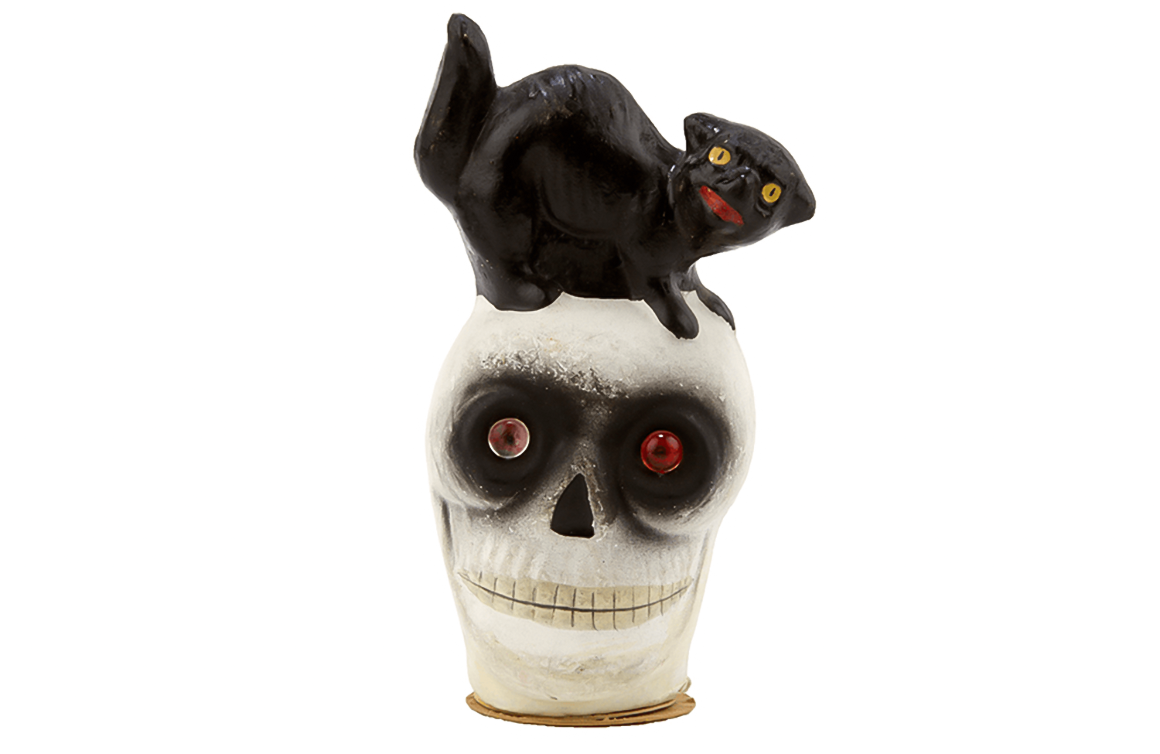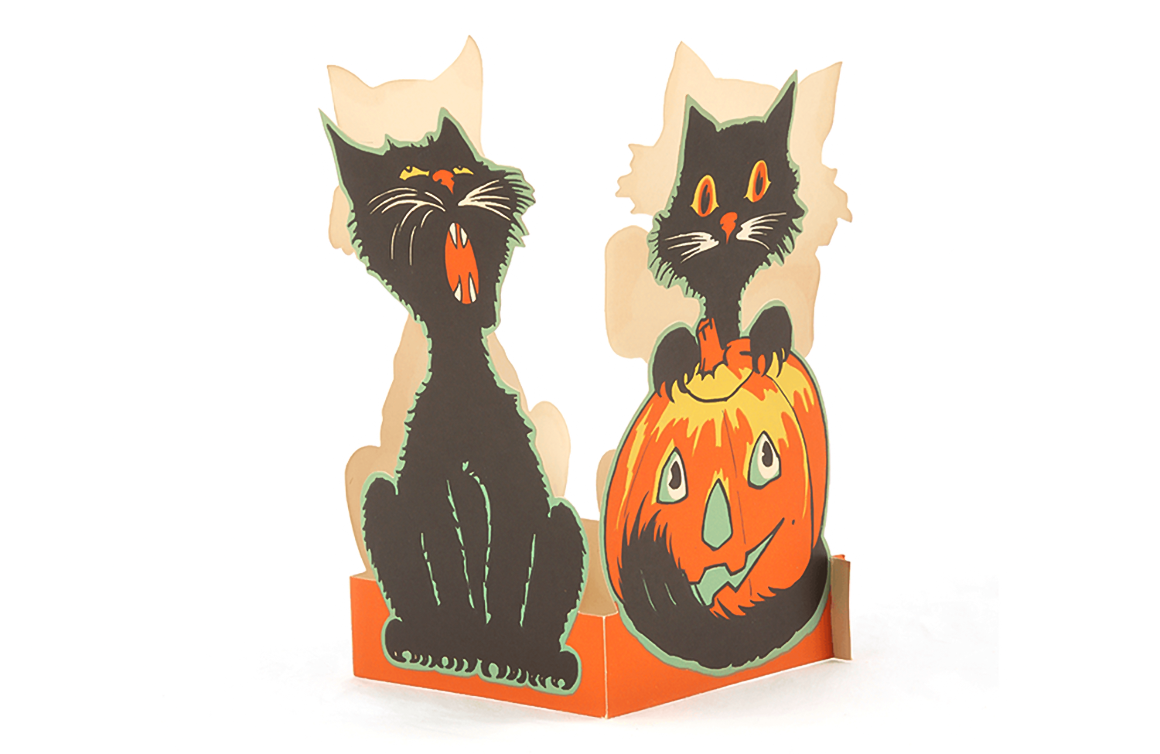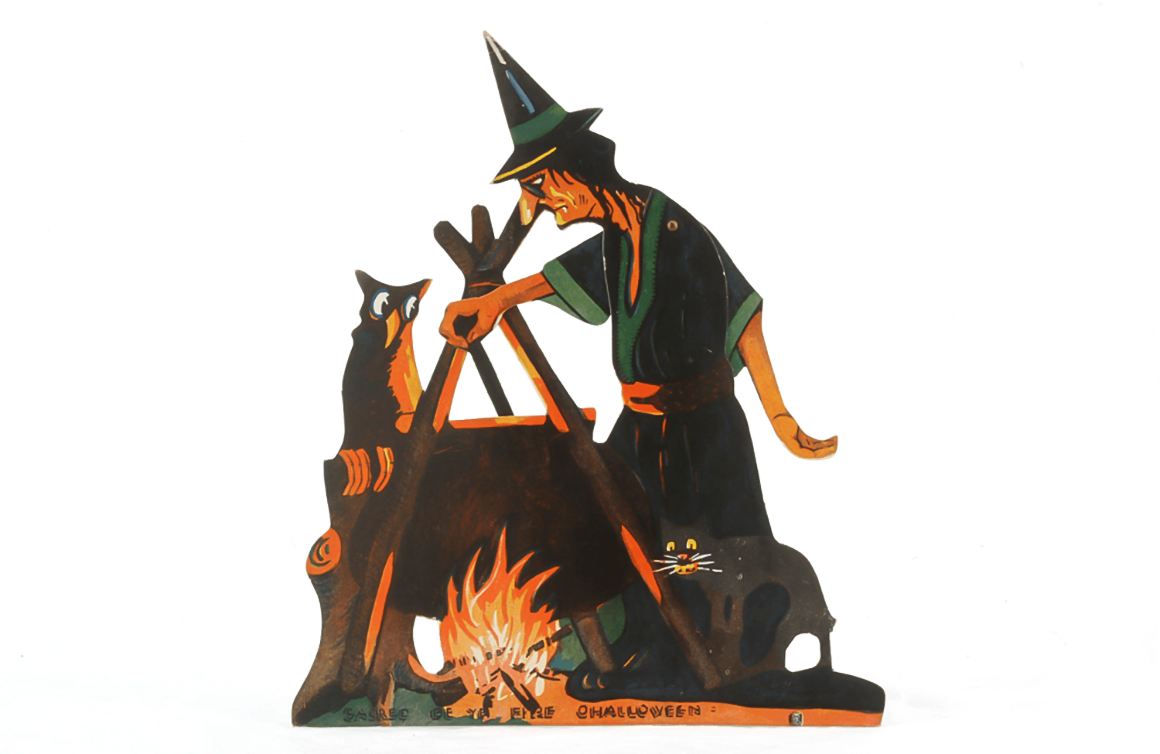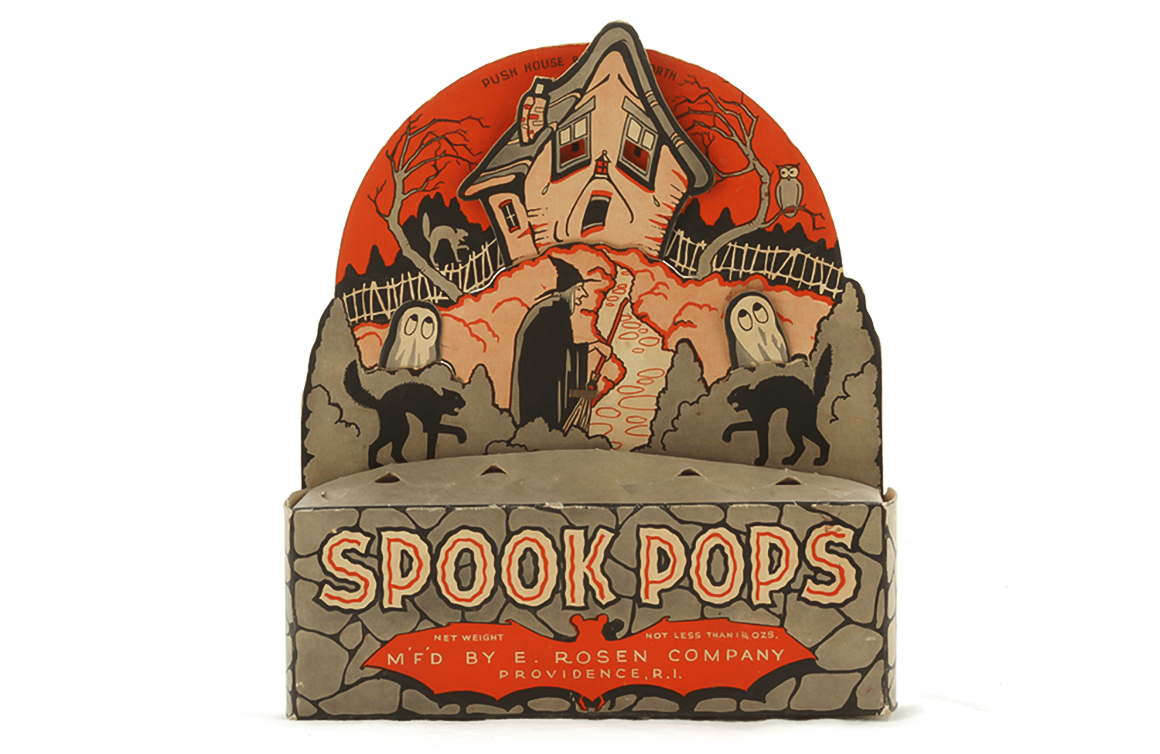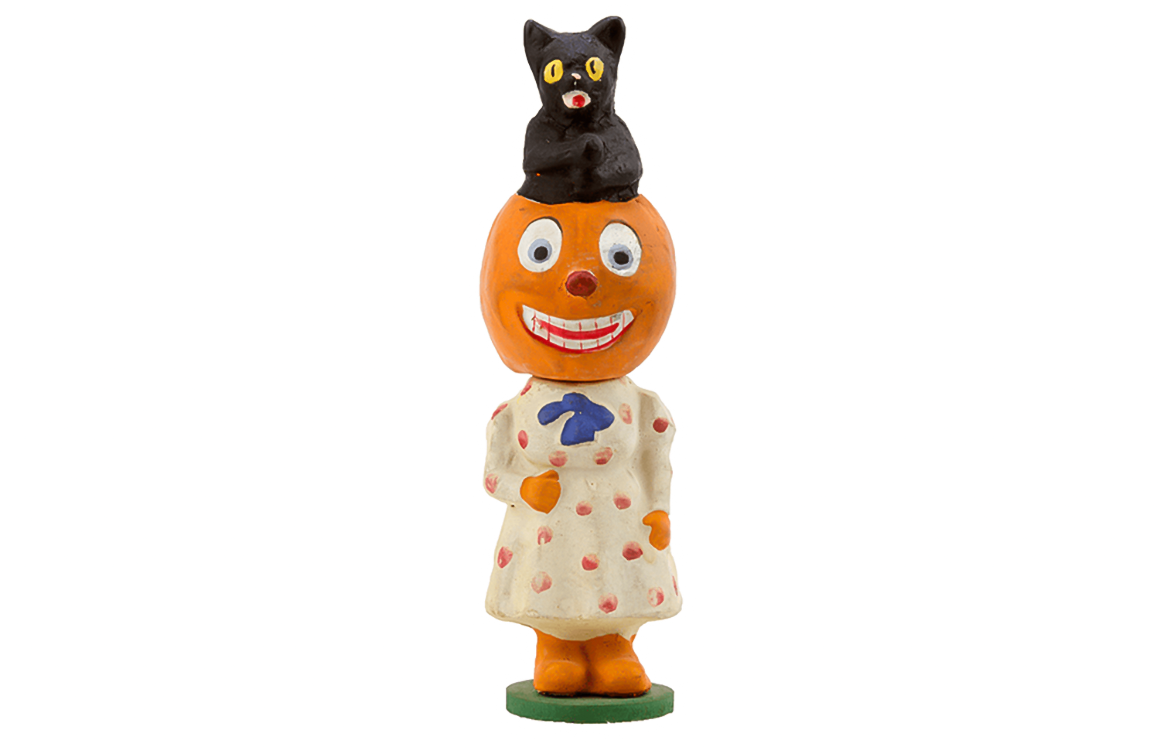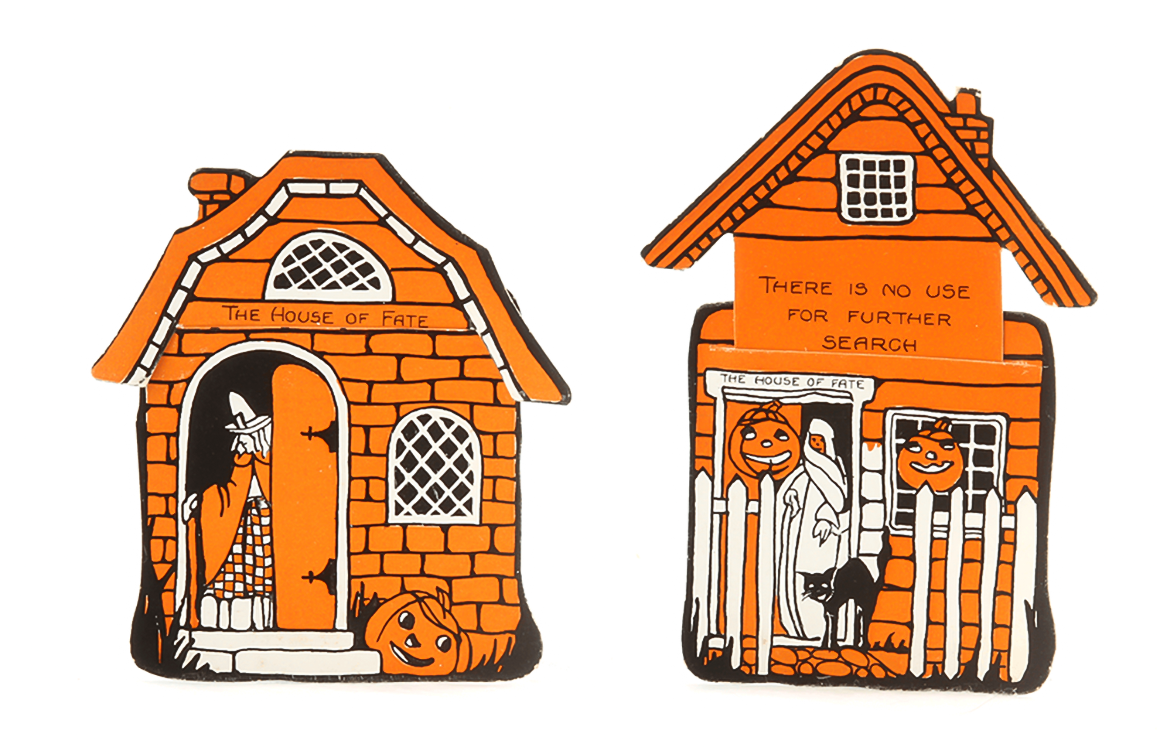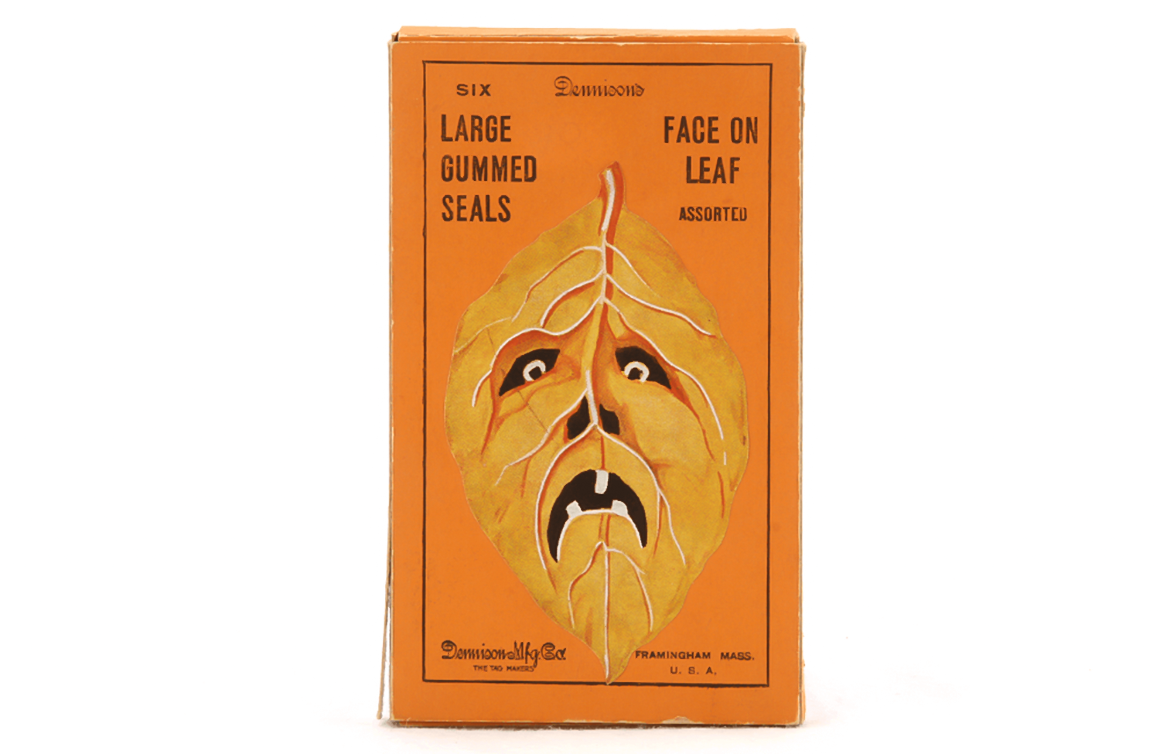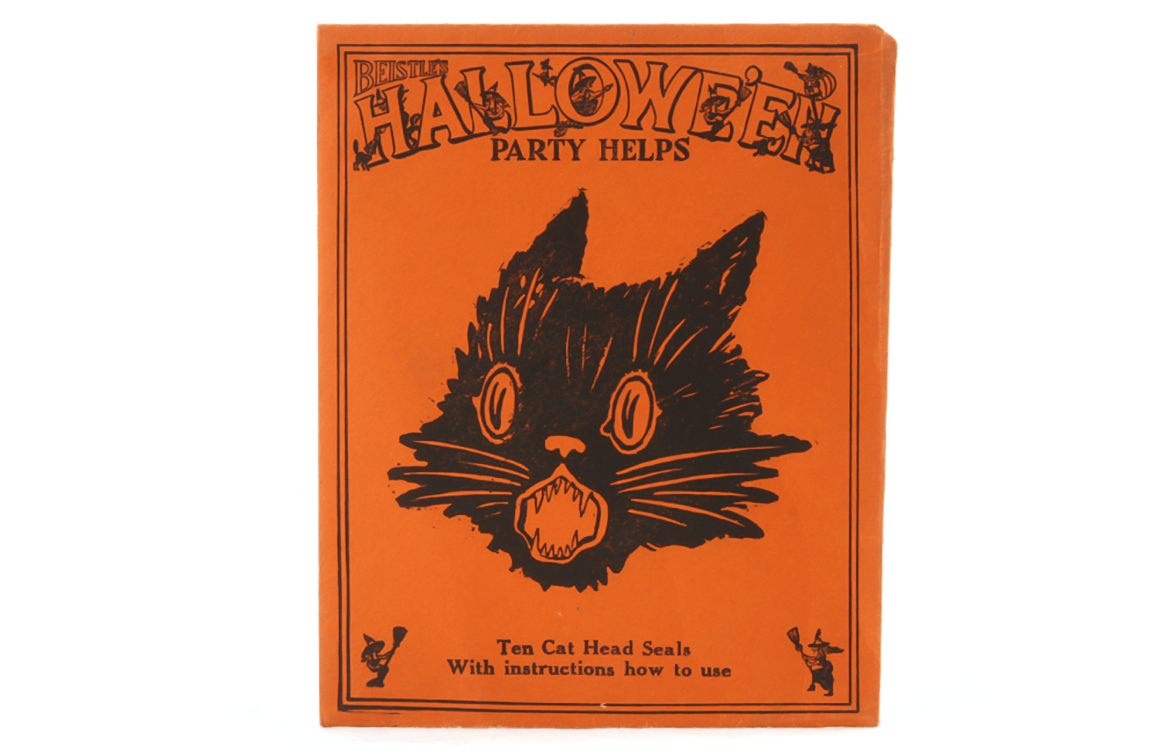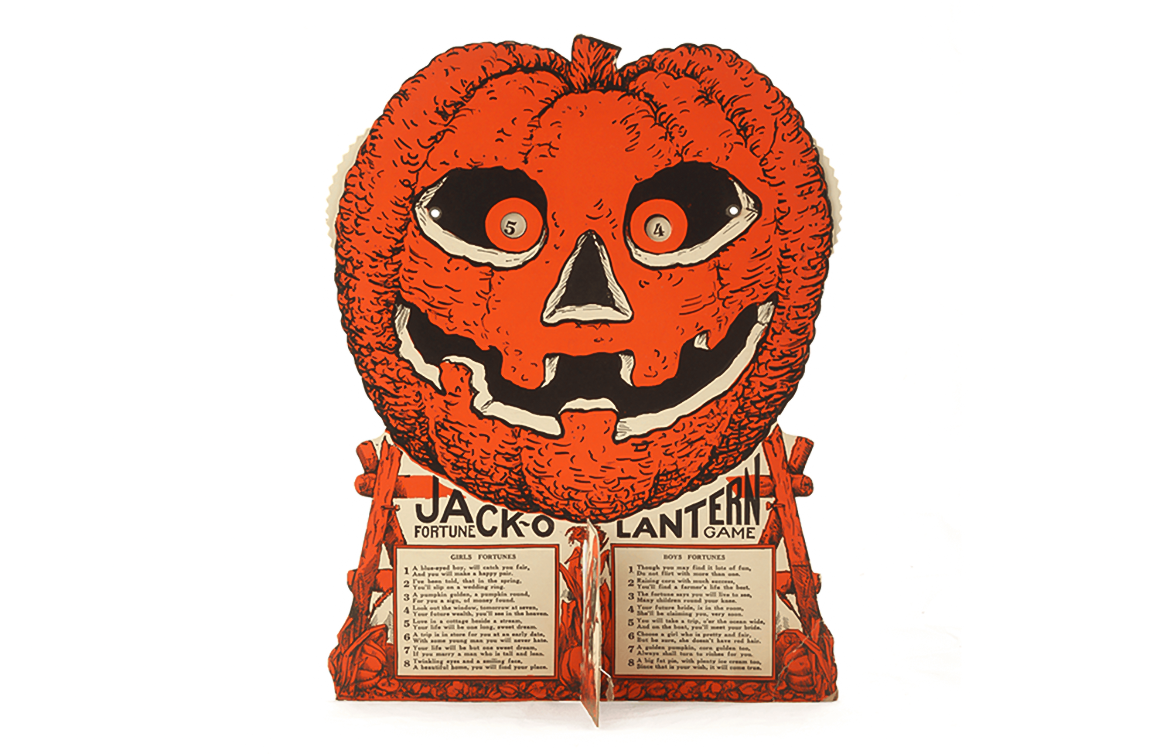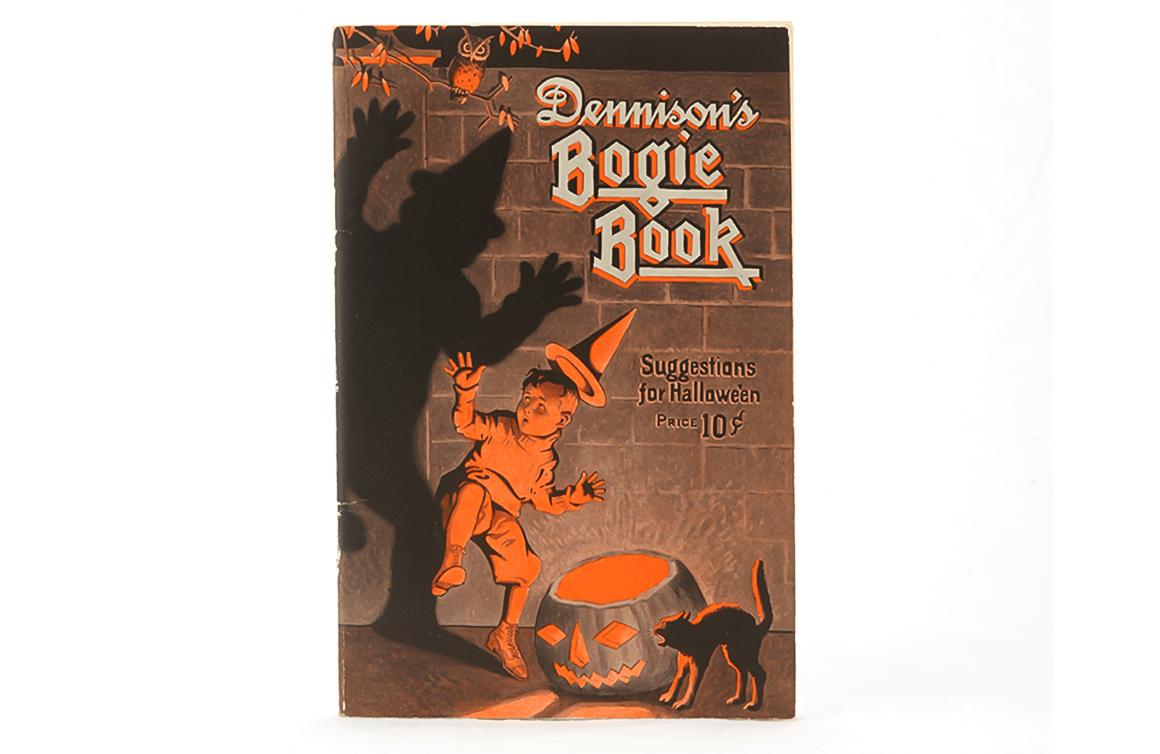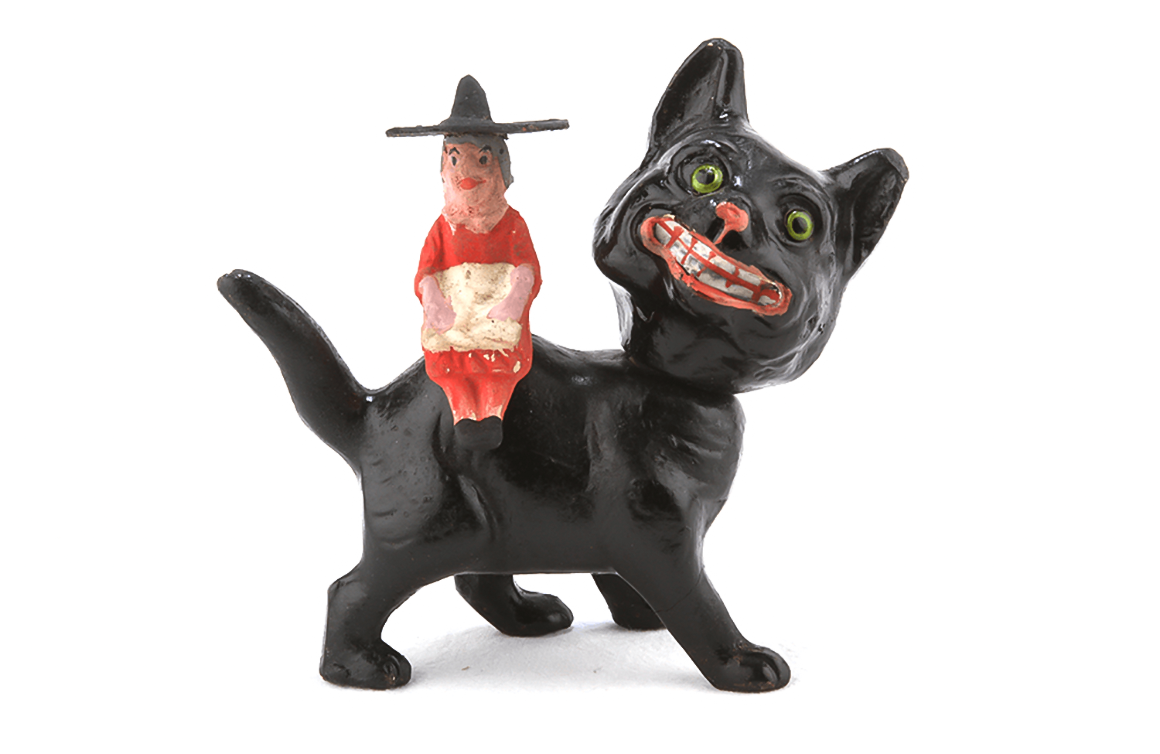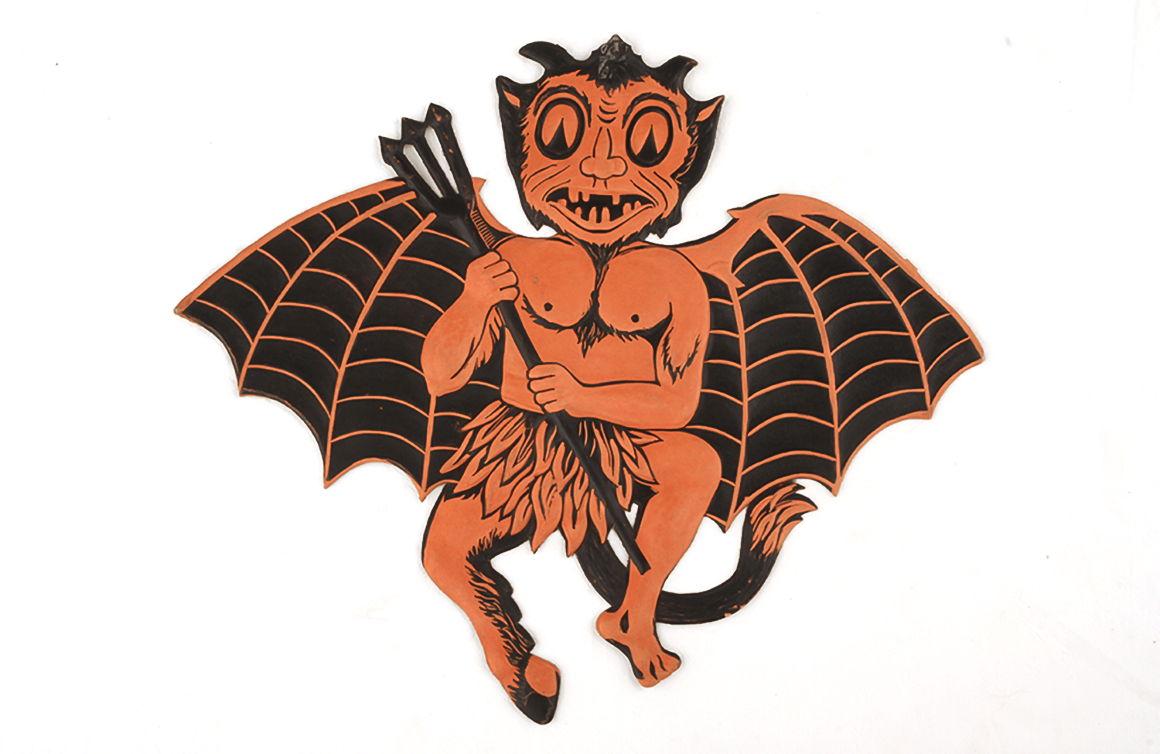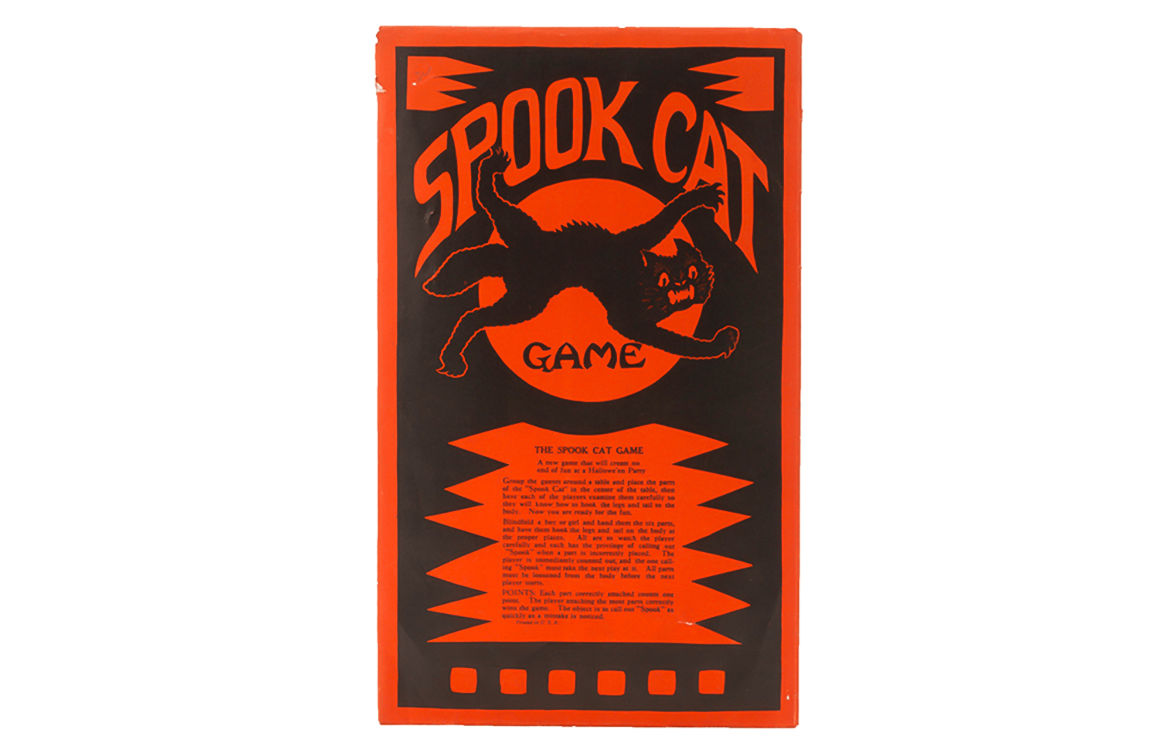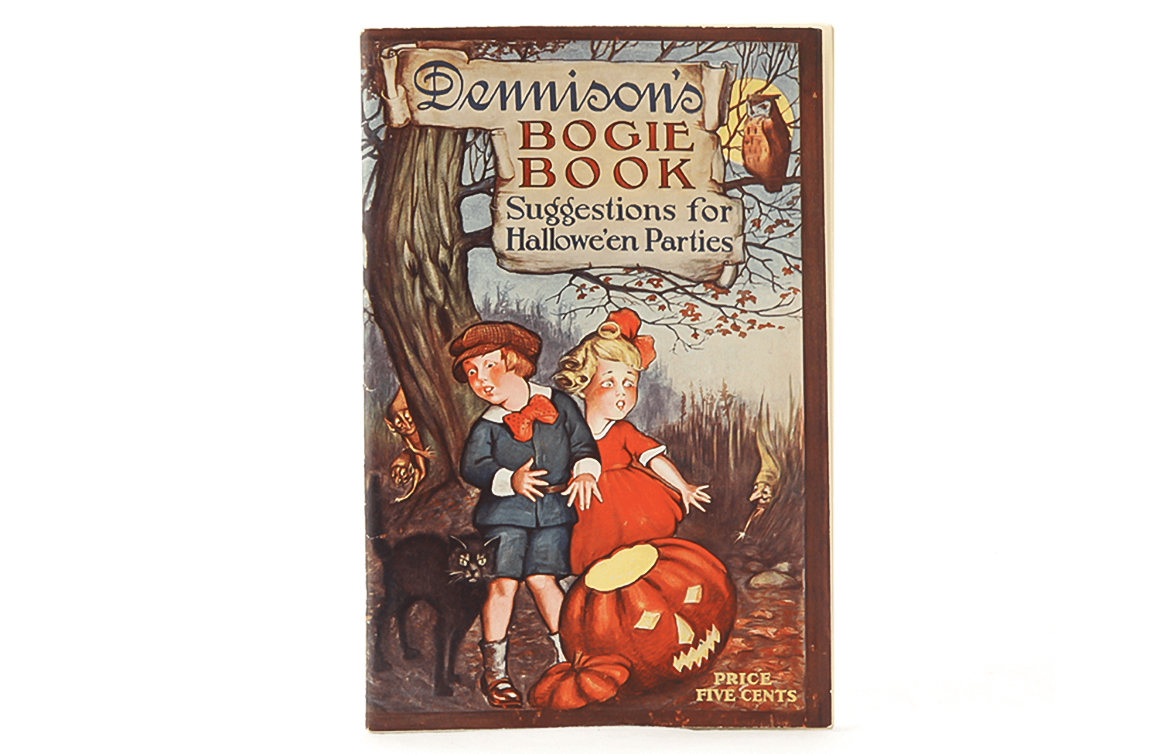How did you get your start as a Halloween collector?
I began collecting in 1988, purely as a fluke. I was browsing in a local antique store when the store’s owner asked if I’d help move a few boxes from her back room to the front windows. Once done, I opened the boxes and saw a great deal of vintage Halloween items. I was instantly hooked, spending about $300 that day. That was merely the first raid on my wallet!
I was attracted by the artistic aesthetic of those paper items. They weren’t celebrating gore or bloodletting; rather, they were atmospheric in their evocation of unease. These vintage decorations were meant for adults to purchase to decorate for an event with other adults. Children weren’t the primary, or even secondary, audience.
I quickly realized that Halloween material wasn’t often kept, so items in better condition would be rare. My primary motivation to collect came from wanting to purchase as much as I could before others realized the same thing.

Tell us about some of the earliest Halloween collectibles and toys/games produced.
The earliest commercially produced Halloween items in the United States were postcards. The first was in 1907 production continued in great quantities through the 1920s. Some of the bigger names were Tuck, Wall, Clapsaddle, and Winsch.
Dennison of Framingham, Massachusetts began producing Halloween crepe paper as early as 1909, then soon branched out into seals, cut-outs, invitations, place cards, and a host of related products. These were available in Dennison-branded shops as well as through general stationers. Beistle of Shippensburg, Pennsylvania began its Halloween line in 1918. Their total output eclipsed Dennison.
The floodgates flew open during the 1920s, which is commonly considered to be Halloween’s Golden Age. Two manufacturers more than others rushed to meet this new demand with games with a stunt and/or fortune twist: Gibson and Beistle. Gibson made a good go of things with games that were a bit darker and more innovative, like Whoo’s-Whoo and Ring The “Belle”. Beistle, the dominant player in this segment, produced games such as the Witch’s Mystery Answer Game, several iterations of fortune wheel games, I’m A Dumbskull Stunt Game, Spook Cat Game, and many more. Even the big names in toys got into the act when Parker Brothers produced its Jack-O-Lantern Target game in 1929-1932.

What compelled you to publish Vintage Halloween Collectibles: An Identification and Price Guide?
When I surveyed the references available to the general collector prior to the publication of my first edition in 2003, I realized that they were lacking in “hard information”. (I consider myself a curator-collector, which means that I want to know which firm produced which items and for how long). So, I set out to write a heavily illustrated reference brimming with hard information across these general categories: games, lanterns and shades, candy containers, noisemakers, die-cuts, and decorations.
The collecting community was starving for this kind of information, so my first edition led to the second in 2007, and finally, to the third in 2014. It has become the go-to reference for the hobby.

How do the objects in your collection reflect the times in which they were produced?
The earlier items were meant to decorate adult events. The imagery was unsettling in a dread-inducing way. The witches, ghosts and devils, for instance, looked unfriendly.
As Halloween became an event geared more toward children beginning in the later 1930s, the imagery became softer and friendlier. For instance, witches were often depicted smiling, leading to the unthreatening characters of Wendy the Good Witch, Hot Stuff, and Casper during the 1950s.

What would you consider to be among the rarest of Halloween collectibles?
That’s a tough question, as the field is vast.
One example: Germany was a major exporter of paper holiday items to the United States from the 1920s through 1935. In that final year, the German artisans, sensing their labours would be redirected to fields more amenable to war, produced some of their most “out-there” Halloween designs in small quantities that were sent to Canada but not to the USA.
To find these German die-cuts today is quite difficult. When examples surface in collectible condition, they can bring multiple thousands of dollars.

What should people be aware of as they work to acquire objects for their own Halloween collections?
Halloween prices began to escalate sharply in 1992, then again in 1995 when two references were first published. At that time, a veritable tsunami of fakes meant to fool collectors was imported from Germany to the USA. Many collectors were fooled.
Fakes and fantasy items (designs never actually produced in the days of yore) still plague the hobby. My advice is to do your research by purchasing solid references, be a regular visitor to sites like mine, HalloweenCollector.com, go to shows and shops, and get to know which dealers are on the up-and-up. Only with that experience should a new collector regularly use online sites.
Prices for vintage Halloween memorabilia across a high number of market segments continue to strengthen, making knowledge critical for collectors, who should be wary.

Visit HalloweenCollector.com to learn more about vintage Halloween collectables and read Mark’s regular updates on the state of collecting.

